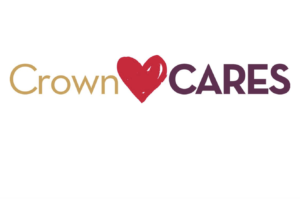Standards Spotlight: Mastering Reading Standard 7

Maureen McLaughlin
When discussing the Common Core State Standards’ most challenging standards, CCSS Reading Anchor Standard 7 is often cited. CCSS R.7 states that students are expected to “integrate and evaluate content presented in diverse media and formats, including visually and quantitatively, as well as in words.” CCSS R.7 focuses on students’ ability to draw on information from multiple sources and to integrate information from diverse media (audio, video, multimedia presentations) and in varied formats (textbooks, charts, graphs, magazine articles, newspapers) when researching and problem solving. Specific tasks for students include:
- Comparing and contrasting reading a story vs. listening/watching in audio or video format
- Evaluating the advantages and disadvantages of using different media to present topics
Using text represented in diverse media makes teaching and learning a whole lot more interesting. We live in a multimodal world. Let’s use this type of text to motivate, engage, and inspire our students to successfully meet CCSS R.7.
Here are some ideas for helping teach CCSS Reading Standard 7:
1. Diverse media (print, audio, photos, illustrations, film, graphic novels, the use of color and design) is highly engaging for 21st century learners. Listening to Martin Luther King Jr.’s “I Have a Dream” speech in addition to reading it is a great example of using multimodal text. Other examples of multimodal text at a variety of grade levels appear in the list below. When we use multimodal text, we broaden the spectrum of student learning and provide opportunities to interact with elements such as images, sounds, representations, expressions, and inspirations students may not otherwise encounter in learning. We should also note that our students can create multimodal responses. Some ideas include:
- Generating digital images
- Writing and illustrating
- Designing self-authored digital texts
- Creating comics
- Engaging in dramatizations
- Producing podcasts
Examples of texts represented in diverse media throughout the grades:
- The Very Hungry Caterpillar – DVD
- Brown Bear and Friends – CD
- The Magic School Bus – DVD
- Stopping by Woods on A Snowy Evening – spoken word
- Hamlet – movie
- Hamlet – graphic novel
Hamlet – radio
2. We need to know how to search for multimodal text. We can do this on our own or use search engines such as NetTrekker which connects users to educator-approved sites that are organized by subject area and readability levels. Then we can teach our students how to critically evaluate text in diverse media formats. This involves our teaching students how to analyze text—to examine the structure of information in detail, particularly for purposes of explanation. Analyzing requires the ability to see patterns and to classify information into component parts. In the CCSS Reading Standards, students are expected to analyze how and why people and ideas develop and interact, how texts are structured, and how two or more texts address similar themes or topics. In the CCSS for Reading: Informational Text, standards such as 3, 5, and 9 address student expectations to analyze text. In CCSS R.7, analyzing also means determining the strengths of each medium in representing the topic. Graphic organizers such as the Audio-Print-Film Organizer support the analysis of text represented in diverse media.
With the vast blended and personalized learning opportunities creating a revolution in the way we teach reading, we know our students need to be engaged with reading texts in a variety of ways. Let’s find ways to create engagement and Deeper Learning through the use of diverse media to teach text. This is what the CCSS R.7 is all about. Students can be the learners and the creators in the process. They can upload, post, and put their own creations in their digital portfolio/backpack—the possibilities are endless!
This blog is part 3 of a 4 part series “Spotlight on ELA: Strategies for Addressing the Most Challenging Standards” sponsored by Curriculum Associates. For more see:
 Dr. Maureen McLaughlin is a professor in the Reading Department at East Stroudsburg University of Pennsylvania and the past President of the International Reading Association (IRA). Dr. McLaughlin is also an author on Ready® Common Core published by Curriculum Associates. Learn more about the most challenging Common Core reading standards as determined by Curriculum Associate’s i-Ready Diagnostic.
Dr. Maureen McLaughlin is a professor in the Reading Department at East Stroudsburg University of Pennsylvania and the past President of the International Reading Association (IRA). Dr. McLaughlin is also an author on Ready® Common Core published by Curriculum Associates. Learn more about the most challenging Common Core reading standards as determined by Curriculum Associate’s i-Ready Diagnostic.







0 Comments
Leave a Comment
Your email address will not be published. All fields are required.